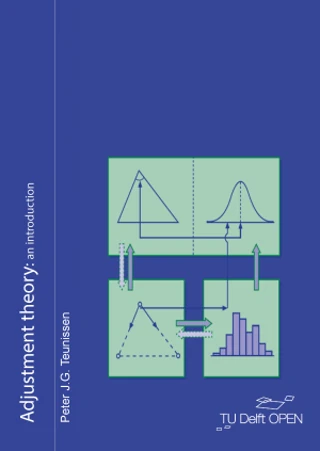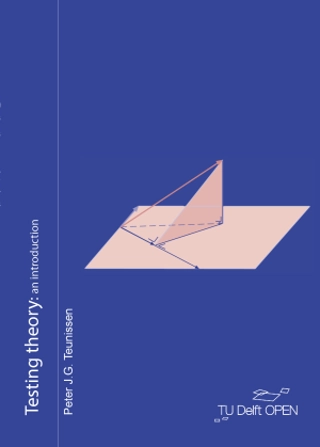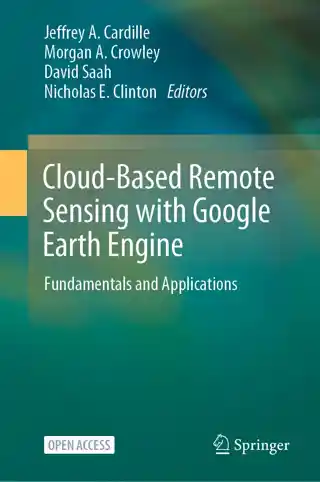Adjustment theory can be regarded as the part of mathematical geodesy that deals with the optimal combination of redundant measurements together with the estimation of unknown parameters. It is essential for a geodesist, its meaning comparable to what mechanics means to a civil engineer or a mechanical engineer. Historically, the first methods of combining redundant measurements originate from the study of three problems in geodesy and astronomy, namely to determine the size and shape of the Earth, to explain the long-term inequality in the motions of Jupiter and Saturn, and to find a mathematical representation of the motions of the Moon. Nowadays, the methods of adjustment are used for a much greater variety of geodetic applications, ranging from, for instance, surveying and navigation to remote sensing and global positioning.
The two main reasons for performing redundant measurements are the wish to increase the accuracy of the results computed and the requirement to be able to check for errors. Due to the intrinsic uncertainty in measurements, measurement redundancy generally leads to an inconsistent system of equations. Without additional criteria, such a system of equations is not uniquely solvable. In this introductory course on adjustment theory, methods are developed and presented for solving inconsistent systems of equations. The leading principle is that of least-squares adjustment together with its statistical properties.
The inconsistent systems of equations can come in many different guises. They could be given in parametric form, in implicit form, or as a combination of these two forms. In each case the same principle of least-squares applies. The algorithmic realizations of the solution will differ however. Depending on the application at hand, one could also wish to choose between obtaining the solution in one single step or in a step-wise manner. This leads to the need of formulating the system of equations in partitioned form. Different partitions exist, measurement partitioning, parameter partitioning, or a partitioning of both measurements and parameters. The choice of partitioning also affects the algorithmic realization of the solution. In this introductory text the methodology of adjustment is emphasized, although various samples are given to illustrate the theory. The methods discussed form the basis for solving different adjustment problems in geodesy.
Conditions of Use
![]() This book is licensed under a Creative Commons License (CC BY). You can download the ebook Adjustment Theory, 2nd Edition for free.
This book is licensed under a Creative Commons License (CC BY). You can download the ebook Adjustment Theory, 2nd Edition for free.
- Title
- Adjustment Theory, 2nd Edition
- Subtitle
- an introduction
- Publisher
- TU Delft OPEN Publishing
- Author(s)
- Peter J.G. Teunissen
- Published
- 2024-06-13
- Edition
- 2
- Format
- eBook (pdf, epub, mobi)
- Pages
- 211
- Language
- English
- ISBN-13
- 9789463668842
- License
- CC BY
- Book Homepage
- Free eBook, Errata, Code, Solutions, etc.
Front cover Adjustment theory
Preface
Contents
Introduction
1 Linear estimation theory: an introduction
1.1 Introduction
1.2 Least-squares estimation (orthogonal projection)
1.3 Weighted least-squares estimation
1.4 Weighted least-squares is also orthogonal projection
Intermezzo: Cholesky decomposition
1.5 The mean and covariance matrix of least-squares estimators
1.6 Best Linear Unbiased Estimators (BLUE’s)
1.7 The Maximum Likelihood (ML) method
1.8 Summary
Table 1.1
2 The model with observation equations
2.1 Introduction
2.2 Least-squares estimation
Intermezzo
2.3 The mean and covariance matrix of least-squares estimators
2.4 Best Linear Unbiased Estimation
2.5 The orthogonal projector
2.6 Summary
Best Linear Unbiased Estimation
3 The model with condition equations
3.1 Introduction
3.2 Best Linear Unbiased Estimation
3.3 The case B*E{y}=b^0, b^0≠0
3.4 Summary
Best Linear Unbiased Estimation
4 y^R - Variates
4.1 Introduction
4.2 Free variates
4.3 Derived variates
4.4 Constituent variates
5 Mixed model representations
5.1 Introduction
5.2 The model representation B*E{y}=Ax
5.3 The model representation E{y}=Ax , B*x=0
6 Partitioned model representations
6.1 Introduction
6.2 The partitioned model E{y} = (A1 : A2)(xsub1 over xsub2)
6.3 The partitioned model (recursive estimation)
Table 6.1: Recursive estimation (A-form)
Table 6.2: Recursive estimation (B-form)
Table 6.3
6.4 The partitioned model (block estimation I)
6.5. The partitioned model (block estimation II)
Table 6.4: Block estimation
Table 6.5: Block estimation
6.6 The partitioned model (Estimation in phases)
Table 6.6: Estimation in phases
Table 6.7: Correspondence between partitioned condition equations and partitioned observation equations
7 Nonlinear models, linearization, iteration
7.1. The nonlinear A-model
7.1.1 Nonlinear observation equations
7.1.2 Linearization: Taylor’s theorem
7.1.3 The linearized A-model
Table 7.1: Linearized least-squares estimation
7.1.4 Least-squares iteration
Table 7.2: Least-squares iteration
7.2 The nonlinear B-model and its linearization
Appendix A Taylor’s theorem with remainder
Appendix B Unconstrained optimization: optimality conditions
Appendix C Linearly constrained optimization: optimality conditions
Appendix D Constrained optimization: optimality conditions
Appendix E Mean and variance of scalar random variables
Appendix F Mean and variance of vector random variables
Literature
Index
Back cover Adjustment Theory
A BRIEF ACCOUNT ON THE EARLY HISTORY OF ADJUSTING GEODETIC AND ASTRONOMICAL OBSERVATIONS.pdf
Appendix G
A BRIEF ACCOUNT ON THE EARLY HISTORY OF ADJUSTING GEODETIC AND ASTRONOMICAL OBSERVATIONS0F

